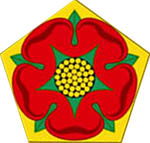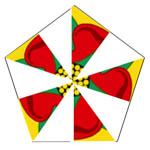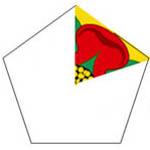Skip over navigation


Or search by topic
Number and algebra
Geometry and measure
Probability and statistics
Working mathematically
Advanced mathematics
For younger learners
Rose
Age 16 to 18
Challenge Level 





|
1
 |
2 |
3 |
4 |
|
List the symmetries in each of the four diagrams, that is the
transformations which map the picture into itself.
What transformations do you get if you combine the
transformations from diagrams 3 and 4 in all possible ways?
A set of transformations, with the operation of combining
transformations, becomes a group when the set includes all possible
combinations of the transformations in the set.
Do the sets of transformations you have listed form groups
when their transformations are combined?
Can you find any other groups of transformations which map a
regular pentagon to itself?
How many distinctly different groups are there which map a
regular pentagon into itself?
Note: You don't need to do
more in order to submit a solution but why not pose some similar
questions for yourself? The article Paint Rollers for Frieze Patterns
explores in 3D the same idea of
groups of symmetries.
|
You may also like
Mean Geometrically
A and B are two points on a circle centre O. Tangents at A and B cut at C. CO cuts the circle at D. What is the relationship between areas of ADBO, ABO and ACBO?
Logosquares
Ten squares form regular rings either with adjacent or opposite vertices touching. Calculate the inner and outer radii of the rings that surround the squares.

